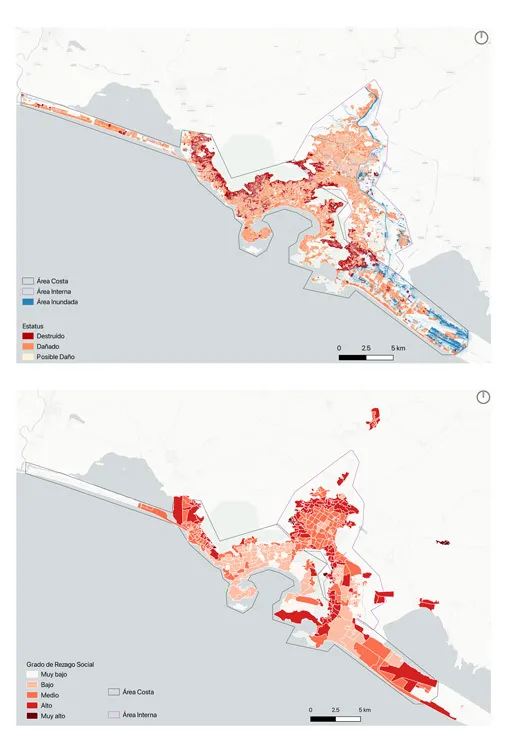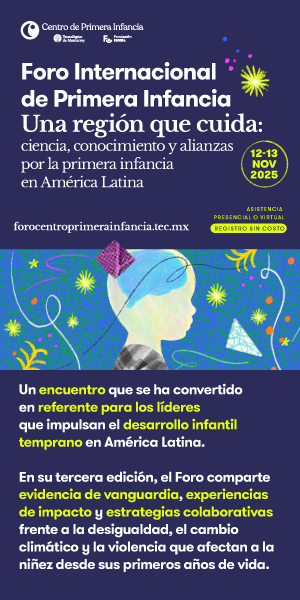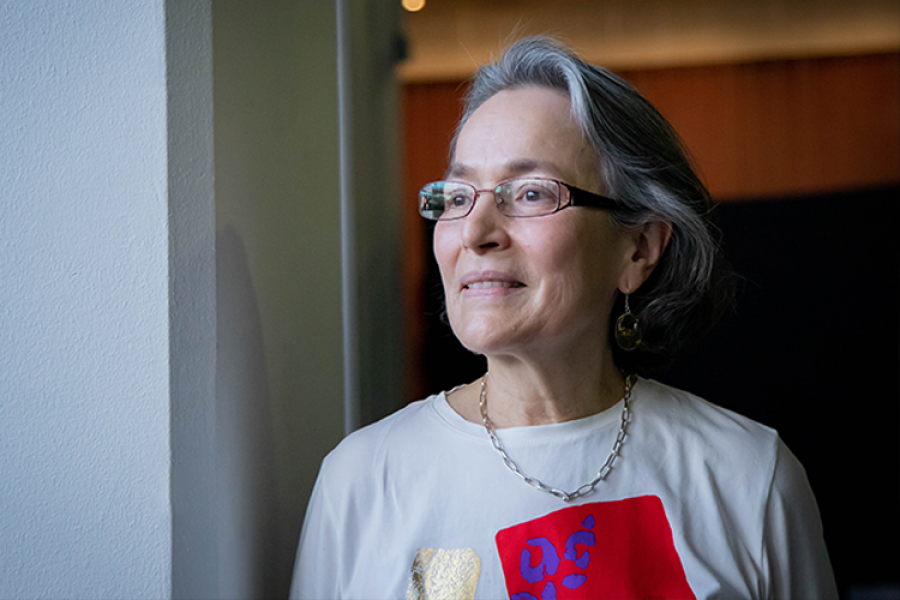By: Roberto Ponce y Marco Antonio Cruz Sandoval from Center for the Future of Cities, Tec de Monterrey **
In recent decades, various conferences and international summits have been held to achieve consensus in creating agreements and defining goals to strengthen urban resilience and sustainability in the face of climate change.
Despite the commitment of many countries to these objectives, only a few incorporate them as mandatory mandates in their public policies. The United Nations warns that the economies of middle and low income disproportionately experience the consequences of natural disasters. These not only lead to significant human losses but also severe economic repercussions.
The paralysis in decision-making in the face of this phenomenon results in an increase in global warming, intensifying the frequency and severity of extreme events and their social and economic impacts.
On October 25, 2023, Acapulco faced the devastating force of Tropical Cyclone Otis,d a Category 5 hurricane, one of the most intense recorded in the history of the Mexican Pacific coast.
The hurricane left behind a trail of destruction: human losses, approximately 580,000 affected, 7,000 hectares of structures destroyed or severely damaged, and about 900 kilometers of roads affected.
Although the National Meteorological Service knew Otis and its trajectory since Sunday, October 22, the cyclone’s intensity caught the city off guard and confirmed the lack of planning. In less than 12 hours, Otis went from being a tropical storm to a Category 5 hurricane, with winds increasing from 100 km/h to 330 km/h when it made landfall in Acapulco.

Despite Otis reaching Category 5, the highest level on the Saffir-Simpson scale for hurricanes, the reality of its impact has territorial nuances and requires a detailed understanding of two critical concepts: risk and vulnerability.
Risk, in this context, refers to the probability of suffering damage from events like Otis, with possible social, economic, political, and environmental repercussions. Vulnerability, on the other hand, explains why, when hit with the same force of a disaster, different people are at different levels of risk due to a complex interaction of social and demographic factors.
This web of inequalities, known as intersectionality, explains why the consequences of Otis’s impact differ greatly and highlights the coexistence of various Acapulcos regarding income levels.
Acapulco is one of the 85 municipalities that make up the state of Guerrero, and according to data from INEGI in 2020, it has a population of 852,622 inhabitants. According to the Ministry of Economy, during the first quarter of 2023, 61.6% of the population of Guerrero was economically active. The Laboratory of Analysis in Commerce, Economics, and Business (LACEN) reports that about 70% of the workers in the region were economically dependent on Acapulco.
Regarding income, the Center for the Future of Cities (CFC) at the Tecnológico de Monterrey analyzed the 74 metropolitan areas of Mexico according to the classification of the National Urban System (SUN) of 2018. It indicates that Acapulco has the lowest average income, with 8,315.20 pesos per person quarterly. This contrasts with areas like Querétaro, Tijuana, Monterrey, Chihuahua, Hermosillo, Guanajuato, Cancún, Saltillo, Nogales, and Guadalajara, where the average income exceeds 18,000 pesos quarterly.
Additionally, the CFC has researched socio-spatial segregation, characterized by the unequal distribution of different social strata in the territory. Using a global segregation index ranging from 0 to 1 (value H), Acapulco is ranked as the 59th most segregated metropolitan area out of the 74 analyzed, with an H index of 0.004.
The analysis becomes more important when considering data from the National Council for the Evaluation of Social Development Policy (CONEVAL, 2022), which indicates that 72.9% of rural inhabitants in Guerrero and 61.7% of urban residents live in poverty. Similarly, the Annual Report on the Situation of Poverty and Social Backwardness 2022 from the Ministry of Welfare highlights that 51.1% of the population of Acapulco lives in poverty, with 23.4% lacking access to clean water and 17.3% living in homes with dirt floors or fragile structures, often in overcrowded conditions.
The information provided by the Copernicus land monitoring service, together with socio-economic data from CONEVAL, sheds light on the region’s vulnerability. The images and analysis present a visual narrative of what happened. While the destruction caused by Hurricane Otis was widespread, it is clear that communities with higher levels of social lag faced the greatest degree of devastation.

The trail of destruction left by Hurricane Otis has brought to light an inequality rooted and systematically perpetuated by various administrations over several decades. It has also revealed a significant deficiency in responsiveness. This circumstance highlights the absence of adequate policies to adapt to the challenges of climate change. It urgently emphasizes the need to formulate strategies that ensure agile adaptation and response to extreme weather phenomena while consolidating long-term resilience, preventing future inequalities and vulnerabilities.
The recovery and reconstruction after Hurricane Otis demand a fundamental reassessment of our methods of city-building. It is imperative to adopt a new paradigm and break with the status quo that has guided urban development in our country. This requires visionary political leadership that not only understands the magnitude and seriousness of climate change but also proposes public policies and develops planning tools with a firm commitment to the common good, transcending different government administrations.
These initiatives must be designed to foster urban resilience, always based on rigorous scientific evidence, citizen participation processes, and distinguishing themselves by focusing on social justice, environmental justice, spatial justice, and promoting inclusion and equity as central axes for the reconstruction of our communities.
Strategies to face natural disasters must be holistic, integrating various factors and recognizing the complexity of their interactions. The need to focus on urban resilience and adaptability becomes evident when examining the impact of Hurricane Otis, especially in terms of the age of urbanized areas.
Data from the Center for the Future of Cities (CFC) reveal damage in areas built before 1975, reaching nearly 15% of the total area. On the other hand, areas built in 2015 suffered approximately 11.08% of the damage.
These data indicate that older infrastructures, possibly governed by outdated regulations that ignore the impacts of climate change, are particularly vulnerable. Additionally, significant damage to more recent constructions suggests that current regulations may be insufficient or that formal urbanization and informal settlements may develop in risk-prone areas. The question arises of how to manage both newly formed settlements and those already consolidated in risk zones and what measures to take with old structures that have not considered current risks.

Similarly, there is a need to rethink a new economic development model for Acapulco and the state of Guerrero that is more resilient. This involves a more diversified economic composition and less dependence on the tourism sector. Otis has meant a 60% impact on economic activity for Guerrero and 100% for the coastal city. According to the Ministry of Tourism, the tourism industry is the strongest pillar of the economy, constituting around 23.2% of the state’s GDP.
Data from the National Statistical Directory of Economic Units (DENUE) indicates that Acapulco has approximately 302 hospitality establishments and over 5,000 businesses in the food preparation sector. Regarding employment, it has been estimated that around 115,000 formal workers in the services and commerce sector have been adversely affected, as about 80% of the physical establishments where they provided their services have suffered damage.
Damages caused by Otis by the year of construction of the Urbanized Area. Own elaboration based on Copernicus and the National Statistical Directory of Economic Units (DENUE).

The city of Acapulco faces significant challenges following the damages caused by Hurricane Otis. The upcoming December holiday season, crucial for the local economy, is compromised, limiting the city’s capacity and its administration to generate essential resources for a quick recovery. According to specialists, even in the best-case scenario, Acapulco could take about two years to fully recover.
This natural disaster highlights the urgent need to rethink Acapulco’s resilience to climate change. Reconstruction should not be limited to surface repairs; instead, it should be seized as a catalyst to promote sustainable and equitable development. This involves laying the foundations for a territory capable of adapting to future climate challenges.
**Roberto Ponce, leader of City Science, and Marco Antonio Cruz Sandoval, a fellow researcher in City Sciences. Center for the Future of Cities at the Tec de Monterrey.
















